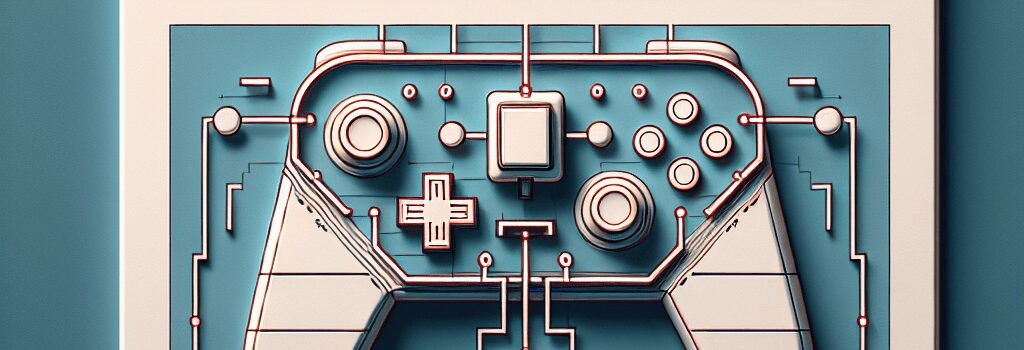Nintendo’s Controller Redesign for Switch 2

After years of consumer complaints about stick drift on the original Switch Joy-Cons, anticipation was high that Nintendo would adopt magnetic Hall effect sensors in its next-generation hardware. However, recent statements from Nintendo executives confirm that the redesigned Switch 2 Joy-Cons will not incorporate the more robust, yet expensive, Hall effect technology.
New Design Philosophy Without Hall Effect Sensors
At a recent roundtable Q&A, Nintendo of America Senior Vice President Nate Bihldorff explained that the new Joy-Con 2 controllers have been completely redesigned from the ground up. While fans had hoped for the precision of magnetic Hall effect sensors to counteract drift, Bihldorff assured that the new control sticks have been reengineered to feel smoother and promise enhanced durability. Switch 2 Technical Director Tetsuya Sasaki elaborated that the redesigned sticks feature a wider range of motion and smoother operation, aiming to mitigate the well-known issues that plagued earlier models.
Technical Considerations Behind the Redesign
The original Joy-Cons use mechanical sensors that depend on metal contacts interacting with a graphite layer. Over time, repeated use causes wear and generates microscopic debris that may lead to the notorious stick drift. In contrast, Hall effect sensors utilize magnetic fields to detect joystick positions without contact, a method that significantly reduces mechanical wear. Despite the clear advantages of Hall effect technology, its higher cost likely contributed to Nintendo’s decision to rely on a reengineered traditional approach.
- Traditional Mechanical Sensors: These depend on physical contacts that can wear down with use, causing drifting and inaccuracies over time.
- Magnetic Hall Effect Sensors: By detecting magnetism rather than using physical contact, these sensors offer increased longevity and drift resistance, albeit at a higher manufacturing cost.
- Redesigned Joy-Con 2 Joysticks: Featuring larger control sticks built from components engineered for smoother movement and improved wear resistance, Nintendo aims to overcome drift issues without incurring the expense of Hall effect sensors.
Expert Opinions and Industry Insights
Industry analysts and hardware experts have provided mixed reactions to Nintendo’s decision. While Hall effect sensors are renowned for their precision and durability, several experts noted that a comprehensive redesign of the mechanical system could also solve many of the reliability issues. In a recent “Ask the Developer” interview, producer Kouichi Kawamoto mentioned that every element of the Joy-Con 2 was rethought and improved, with updated internal calibrations designed to reduce drift and enhance signal response times.
Comparisons with other gaming systems reveal that stick drift is not exclusive to Nintendo. Controllers for Xbox and PlayStation, which also rely on conventional sensing mechanisms, have encountered similar issues. Nonetheless, the overhaul in the Joy-Con 2’s design has raised cautious optimism in tech circles, with several experts suggesting that the new construction may be a more cost-effective method to achieve long-term durability.
Consumer Impact and Future Prospects
The omission of Hall effect sensors fuels both hope and skepticism among consumers. Nintendo’s previous struggles with stick drift even led to mass replacement programs and a contentious class-action lawsuit. The redesigned, larger joysticks on the Switch 2 might alleviate these issues, but only extended real-world use will validate these improvements. Users remain attentive, with many wondering if this redesign can finally put an end to the recurring problem of joystick drift.
Additionally, this move could set a new industry standard. Given the cost considerations and the potential benefits of improved mechanical engineering, Nintendo’s approach might influence future controller designs across various gaming platforms. Industry insiders suggest that we may soon see iterative improvements in sensor technology that balance cost with enhanced durability.
Deeper Technical Analysis and Future Innovations
Behind the decision to forego Hall effect sensors is a focus on an iterative redesign that targets a holistic improvement of the Joy-Con mechanism. Recent experiments and internal testing indicate that increasing the joystick’s physical dimensions and optimizing the internal gear assembly can distribute wear forces more evenly over the sensor area. This redesign approach, while fundamentally different from magnetic sensing, utilizes precision machining and higher-grade materials similar to those used in aerospace applications, suggesting a cross-industry infusion of component design innovation.
Furthermore, emerging trends in smart sensor integration and AI-driven calibration could soon allow for adaptive performance enhancements. These technologies may help counteract wear-induced inaccuracies in future iterations, offering a potential middle ground between traditional and magnetic sensing technologies.
Looking Ahead: The Future of Gaming Hardware
The console market is in constant evolution, and Nintendo’s latest strategy may influence upcoming hardware choices across the industry. While Nintendo remains coy about divulging the inner workings of the new Joy-Con design—citing intellectual property concerns—its focus on complete redesign rather than simple component swaps marks a significant shift in approach.
As consumers and enthusiasts await more detailed technical breakdowns, the debate over controller longevity and performance is set to continue. Nintendo’s commitment to smoothing out its hardware issues while balancing cost implications demonstrates a broader trend: the pursuit of iterative engineering solutions that refine user experiences even when cutting-edge technologies like Hall effect sensors remain out of reach.